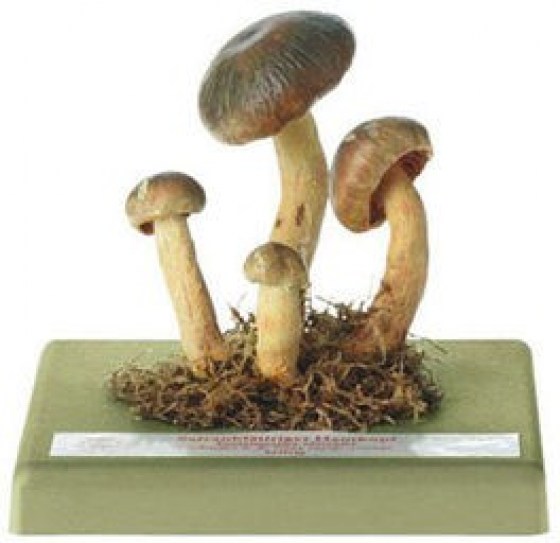Do you need advice? +420 545 235 668
Disarticulated Human Medical Study Skull"
Catalog number: EM270-4706
Product availability: Delivery date HERE
Weight:
1 Kg
Price incl. VAT68 546,50 CZK
Description
In order to develop this skull properly, the advice of educators, anatomists and surgeons was solicited.
Following an evaluation from Dr. Noel Boaz, Professor of Anatomy:
„This skull is ideal for osteological teaching. It allows the student to appreciate the individual bones, the sutures between the bones, and the foramina of the skull. All foramina are bristle-patent, making student exploration of perforating cranial nerve branches and blood vessels possible.
For the medical or dental student this skull is an excellent companion to head-and-neck dissection. For the physical anthropology student this skull is an invaluable learning tool for appreciating anatomical landmarks and cranial morphology. For research, the skull is an invaluable laboratory reference for detailed forensic anthropological, paleoanthropological, and anatomical investigations. Its preparation offers a number of advantages over other cranial models and even over real bone skulls. Museum-quality casting procedures preserve minute surface detail with the appearance and texture of real bone. There are no casting „flash lines“ that can obscure detail. The skull is much more durable and will withstand much more handling than real bone. All foramina have been rendered patent, allowing even small branches of nerves and small blood vessels to be traced through this skull. The skull is particularly useful in tracing the many branches of the trigeminal nerve, in understanding the course of cranial parasympathetic nerves and the location of their ganglia, and in reviewing the bony relationships of the branches of the maxillary artery. Many of these foramina in real skulls are too narrow to admit the passage of a bristle or fine probe. At a competitive price compared to real skulls of good quality, this skull also is not subject to international regulations governing human subjects, sourcing, and donor authorization.“ - Noel T. Boaz, Ph.D., M.D., Professor of Anatomy.
This skull of a probable young adult female is finely detailed, showing all the foramina, canals, sutures and minute details of a real skull. A report by Dr. Boaz titled „Osteological Tracing of Cranial Nerves“ is available and will be sent with the purchase of this skull. The report contains two charts and an 22 x 28 cm poster titled „Bristle through bone: An osteological model approach to teaching the cranial nerves and foramina,“ presented at the American Association of Anatomists/Experimental Biology meeting in April 2006 by Noel Boaz and David Kronen.
Following an evaluation from Dr. Noel Boaz, Professor of Anatomy:
„This skull is ideal for osteological teaching. It allows the student to appreciate the individual bones, the sutures between the bones, and the foramina of the skull. All foramina are bristle-patent, making student exploration of perforating cranial nerve branches and blood vessels possible.
For the medical or dental student this skull is an excellent companion to head-and-neck dissection. For the physical anthropology student this skull is an invaluable learning tool for appreciating anatomical landmarks and cranial morphology. For research, the skull is an invaluable laboratory reference for detailed forensic anthropological, paleoanthropological, and anatomical investigations. Its preparation offers a number of advantages over other cranial models and even over real bone skulls. Museum-quality casting procedures preserve minute surface detail with the appearance and texture of real bone. There are no casting „flash lines“ that can obscure detail. The skull is much more durable and will withstand much more handling than real bone. All foramina have been rendered patent, allowing even small branches of nerves and small blood vessels to be traced through this skull. The skull is particularly useful in tracing the many branches of the trigeminal nerve, in understanding the course of cranial parasympathetic nerves and the location of their ganglia, and in reviewing the bony relationships of the branches of the maxillary artery. Many of these foramina in real skulls are too narrow to admit the passage of a bristle or fine probe. At a competitive price compared to real skulls of good quality, this skull also is not subject to international regulations governing human subjects, sourcing, and donor authorization.“ - Noel T. Boaz, Ph.D., M.D., Professor of Anatomy.
This skull of a probable young adult female is finely detailed, showing all the foramina, canals, sutures and minute details of a real skull. A report by Dr. Boaz titled „Osteological Tracing of Cranial Nerves“ is available and will be sent with the purchase of this skull. The report contains two charts and an 22 x 28 cm poster titled „Bristle through bone: An osteological model approach to teaching the cranial nerves and foramina,“ presented at the American Association of Anatomists/Experimental Biology meeting in April 2006 by Noel Boaz and David Kronen.





